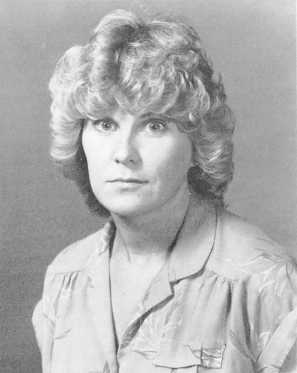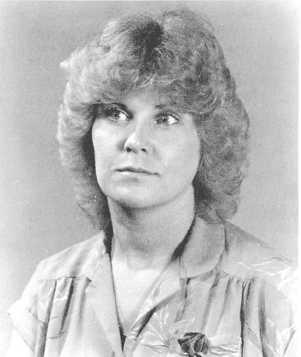302.157
Figure 7-1.–Subject looking directly into the camera.
you may want to start with the camera level at the upper
chest or even at the eye level of the subject. Other factors
that should be considered when selecting the camera
height (especially with a head-and-shoulder portrait)
include the shape of the subject’s face and facial
features, such as a long nose and the length of the
subject's neck By changing the height of the camera in
relation to the subject, you can make corrections to
emphasize or de-emphasize features of the subject.
For full-length portraits, you should start with the
camera height about waist level and the lens parallel to
the subject. When the camera height is too high or too
low and the camera lens is tilted, distortion of the subject
occurs. When the camera is too low, the subject's feet
appear large and the head small. When the camera is too
high, the subject's head and upper body appear large and
top heavy.
A camera position below the eye level of a subject
can produce a side effect that may be distracting; that is,
showing the nostrils more prominently and causing
them to appear as two black holes. To help remedy this
situation, you should place the modeling light higher to
cast a shadow beneath the nose, so the nostrils appear to
blend in with the shadow area.
302.158
Figure 7-2.–Subject looking too far away from the camera.
POSING
The posing bench should be set at an angle to the
camera. When the bench is square to the camera, people
tend to sit on it with their shoulders square to the camera
This puts their shoulders straight across the picture and
such a pose exaggerates the width of the shoulders. This
pose is obviously inappropriate for a woman. When
your subject is a male dignitary (VIP), a pose like this
enhances those qualities. Very few people have
positions that demand such a pose. Having the posing
bench at an angle to the camera before the sitter arrives
should automatically suggest to the subjects that they sit
with their shoulders turned slightly from the camera.
With the shoulders turned slightly from the camera and
the head turned back toward the camera, a sense of
motion is created. Even more motion and alertness can
be suggested by having the subject lean slightly forward.
Eye Direction
To create an intimate portrait, the subject appears to
return a glance to the viewer. The subject's eyes should
look near the camera lens (just above or to the side of
it). When the subject looks directly into the lens, a stare
7-6




